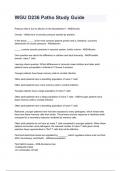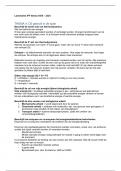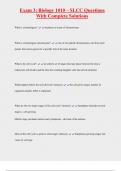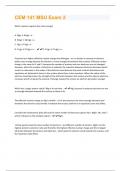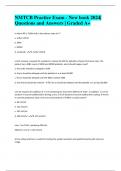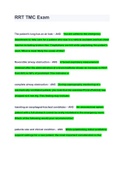Case uitwerking
Brain behavior and movement (BBS1004) cases, lecture, and practicals
- Vak
- Instelling
CASE 1 & LECTURE 3 & LECTURE 5 & LECTURE 6: BRAIN HUMAN NEUROANATOMY PRACTICAL & SHEEP DISSECTION PRACTICAL CASE 2: NEURAL COMMUNICATION CASE 3 & LECTURE 7: VISION CASE 4: BALANCE CASE 5 & LECTURE 8: DECISION MAKING CASE 6 & LECTURE 9: MOVEMENT CASE 7: MOTOR CONTROL AREAS MUSCLE ANATOMY PRA...
[Meer zien]




